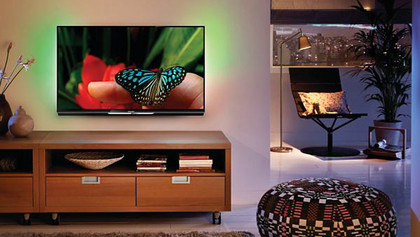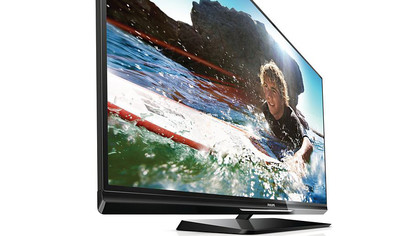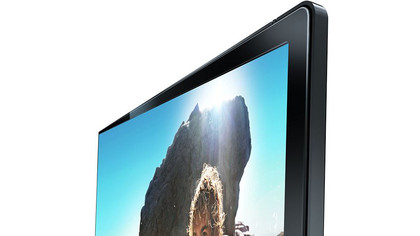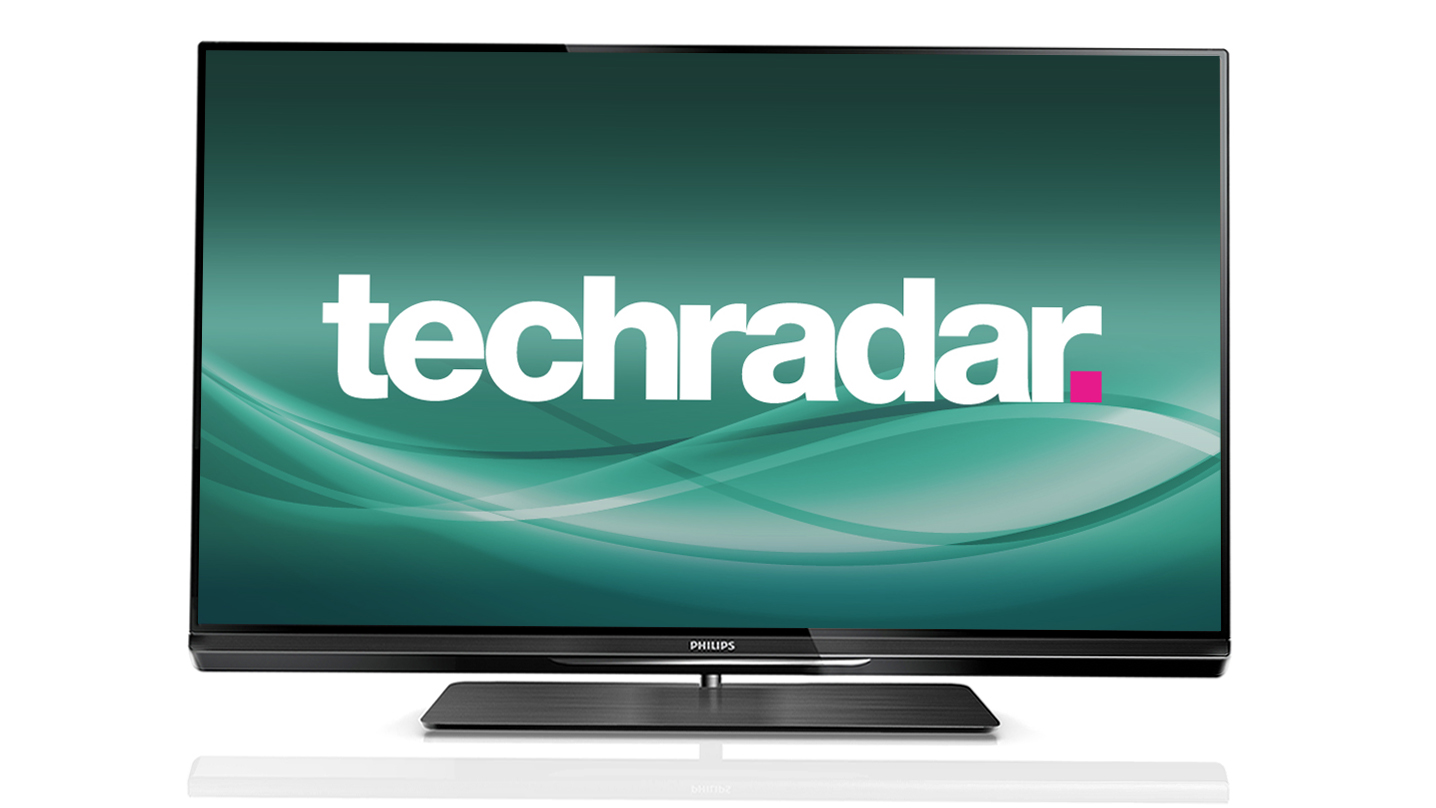Why you can trust TechRadar
The current Philips renaissance as a TV brand has been built on three key principals: sleek designs, more aggressive pricing than it's managed before and some mostly sterling picture quality. Happily, for the most part the Philips 42PFL6007T continues this picture quality theme.
This is especially true with 3D. Despite its initial resistance to the passive format, Philips now seems to have fully embraced it, with the clarity, brightness, colour punch, natural sense of depth and complete freedom from active 3D's common tiring flickering issues ensuring that the Philips 42PFL6007T is as good a 3D performer as any passive 3D TV we've seen.
What's more, the fact that the Philips 42PFL6007T isn't especially large by current TV standards means you're generally not troubled - from a sensible viewing distance, at least - by traditional passive 3D problems of visible horizontal line structure and jaggedness over small, bright objects or curved edges.

We were also struck while watching the Philips 42PFL6007T strut its 3D stuff by the amount of shadow detail the screen was able to show in dark areas of the picture, and by the reasonably clean look to its 3D motion handling - especially if you use the surprisingly effective Natural Motion processing option on its Low setting.
One final plus point to make here is that even with the Philips 42PFL6007T's panel working unusually hard (to keep its 3D images looking bright) we didn't find ourselves noticing any overt patches of backlight inconsistency during dark scenes. This is a big relief when you're talking about a reasonably large screen with an extremely skinny frame.
The only issue with the Philips 42PFL6007T's 3D images is a predictable one: you don't get the nth degree of HD detailing you get with high quality active 3D screens. But honestly, the Philips 42PFL6007T is so good with 3D in every other way that the slightly lower resolution is a sacrifice we're confident many households will be more than happy to make.
2D TV picture

The strengths that make the Philips 42PFL6007T such a winner with 3D also serve it very well with 2D. The intense brightness the screen produces is even more palpable, and without the 3D glasses on you also become more keenly aware that this brightness doesn't come at the expense of a strong black level response.
Yes, there's a touch more greyness infused into parts of the picture that should look black than there is with Philips' higher-end TVs.
But compared with the black level performances of all its main brand rivals at the same sort of price level, the Philips 42PFL6007T holds up very nicely. Especially since it doesn't need to take so much light out of pictures to deliver a good black level that bright elements within predominantly dark scenes end up looking dull.
Colours are subtly rendered and mostly natural in tone too, even though the TV doesn't deliver quite as much vibrancy or as wide a colour range as higher spec Philips televisions.
HD TV pictures

As usual with Philips TVs, the 42PFL6007T produces exceptional sharpness when watching HD sources. In fact, some of the TV's processing elements can take the sharpness a bit too far, so that images start to look 'fizzy' and unnatural.
Rein the processing excesses in, though, and an innate talent at producing every pixel in HD sources joins with some credible/clean motion handling in producing HD images that sparkle with clarity.
Philips' processing prowess also helps the Philips 42PFL6007T produce unusually detailed and crisp standard definition pictures.

Just be careful, again, with the set's assorted noise reduction and sharpness-boosting tools, to ensure that the Philips 42PFL6007T's upscaling doesn't get so aggressive that edges start to look forced and detail levels tip over into grittiness.
There are a couple of areas where the Philips 42PFL6007T's mid-range rather than high-end position does become slightly apparent. First, occasionally the set gets too enthusiastic with its push for contrast, leaving images looking a bit too stark - with slightly bleached whites and forced blacks.
Second, the motion processing system you get with Pixel Precise HD is not as clever or artefact-free as the one you get with Philips' more powerful Perfect Pixel HD engine. But this is no more than you would expect, and you can still get good results from it for a set at the Philips 42PFL6007T's price, so long as you handle its set-up options with care.
John has been writing about home entertainment technology for more than two decades - an especially impressive feat considering he still claims to only be 35 years old (yeah, right). In that time he’s reviewed hundreds if not thousands of TVs, projectors and speakers, and spent frankly far too long sitting by himself in a dark room.

